Blog

Warehouses serve as the backbone of supply chains, safeguarding products before they reach stores or customers’ doorsteps. However, these expansive facilities are prime targets for pests seeking shelter, food, and nesting sites. From rodents gnawing through packaging to insects contaminating inventory, the consequences of unchecked pest activity can be severe—leading to damaged goods, regulatory violations, and significant financial loss. Implementing robust pest protection strategies is not just a matter of cleanliness; it is a critical investment in operational efficiency and reputation management. The Unseen Threat: How Pests Impact Warehouses Pest infestations in warehouses can escalate quickly due to the abundance of hiding places and the constant movement of goods and people. According to the Centers for Disease Control and Prevention, rodents alone cause billions of dollars in damage to food supplies worldwide every year. Stored product insects such as beetles and moths, as well as common pests like cockroaches and flies, are equally problematic, contaminating shipments and posing health risks to employees. Even minor pest activity can trigger extensive recalls and disrupt entire supply chains. In regulated industries, such as food and pharmaceuticals, the presence of pests can result in failed audits or even facility shutdowns. These risks underscore the need for a comprehensive, proactive approach to warehouse pest management. Proactive Protection: Facility Assessments and Risk Mapping The foundation of effective pest control is a thorough facility assessment. At Natura Pest Control , our process begins with a detailed inspection of your warehouse. We identify high-risk zones, such as loading docks, storage racks, and break rooms, where pests are most likely to enter or establish themselves. By mapping vulnerable areas, we can recommend structural improvements—like sealing gaps, installing door sweeps, or enhancing lighting around entry points—to minimize pest access. This tailored approach ensures that preventive measures align with your warehouse’s unique layout and operational flow. Targeted Treatments for High-Risk Areas Not all warehouse zones face the same pest pressures. For instance, storage areas with perishable goods attract different pests than those containing electronics or textiles. Our targeted treatment protocols address each area’s specific needs without disrupting operations or risking product contamination. We employ Integrated Pest Management principles, combining non-chemical methods such as sanitation improvements and exclusion with precise, environmentally responsible treatments. For example, pheromone traps can monitor and manage insect populations in food storage areas, while rodent bait stations placed along exterior walls provide a first line of defense against rodents seeking entry. Our commitment to safety and sustainability means every treatment is designed to protect both your inventory and your workforce, adhering to all relevant regulatory standards. Real-Time Tracking: Staying Ahead of Pest Activity Modern pest management is data-driven. Real-time monitoring tools can detect and track pest activity continuously. Electronic monitoring devices placed throughout the facility provide instant alerts when activity is detected, enabling rapid response before minor issues escalate. This approach not only reduces the likelihood of major infestations but also provides valuable documentation for regulatory compliance. Auditors and inspectors increasingly expect detailed pest control records as part of Good Manufacturing Practices and Hazard Analysis Critical Control Point programs. Digital logs ensure you are always inspection-ready, with clear evidence of ongoing risk management. Ongoing Maintenance: The Key to Lasting Protection Pest control is not a one-time event but a continuous process. Warehouses are dynamic environments, with new shipments arriving daily and facility layouts evolving. Regular maintenance visits allow us to adapt your pest management plan to these changes, inspecting for new vulnerabilities and adjusting treatments as needed. Our maintenance programs include scheduled inspections, replenishment of monitoring devices, and detailed reporting. We also provide staff training on best practices in sanitation and storage, empowering your team to play an active role in pest prevention. Employee awareness is a crucial element of a successful pest control program, as early detection and quick reporting can make all the difference. Compliance and Peace of Mind Regulatory compliance is a top concern for warehouse operators. Pest control measures must align with both local and federal regulations, as well as industry-specific standards. Our team stays current with the latest guidelines from agencies such as the Food and Drug Administration and the Environmental Protection Agency , ensuring your facility not only meets but exceeds compliance requirements. By partnering with Natura Pest Control, you gain more than just a service provider—you gain a trusted ally dedicated to protecting your inventory, reputation, and bottom line. Safeguard Your Warehouse with Natura Pest Control Product loss due to pests is preventable. Through comprehensive assessments, targeted treatments, and real-time monitoring, Natura Pest Control provides the protection your warehouse needs to operate smoothly and confidently. Our customized solutions are designed to meet the unique challenges of your facility, ensuring shipments remain secure, contamination is minimized, and regulatory standards are consistently met. To learn more about how we can help protect your warehouse, contact us today or explore our commercial pest control services for a tailored consultation. Let us help you turn pest management into a competitive advantage.
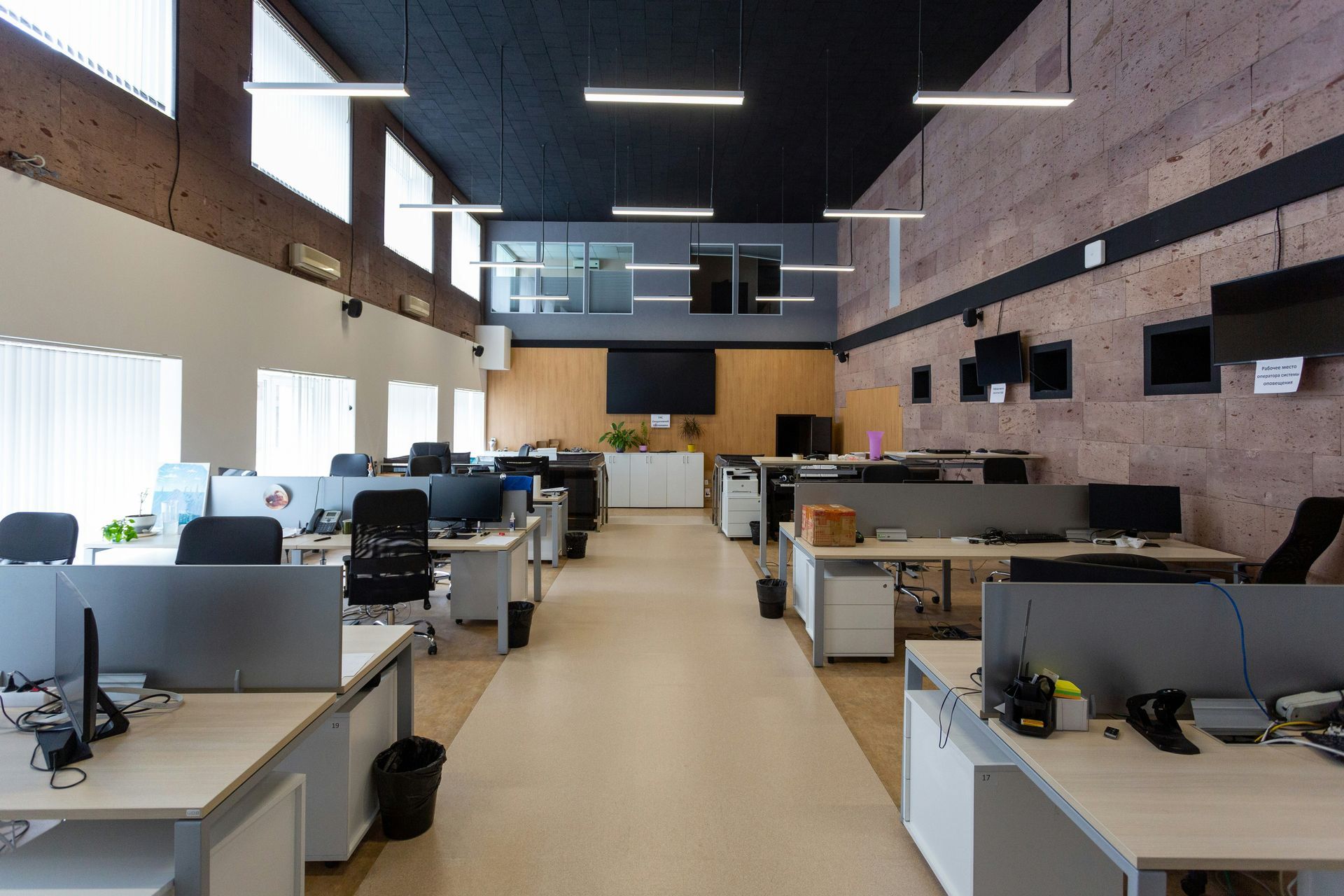
Maintaining a clean and pest-free office environment is crucial for fostering productivity and professionalism. In today's fast-paced business world, uninterrupted workflows are essential, and even minor disruptions can lead to significant setbacks. This post explores the importance of discreet yet consistent pest control in maintaining employee morale, safeguarding sensitive equipment, and upholding a professional image for clients. The Impact of Pests in the Workplace Pests in the office can cause a range of issues that go beyond mere inconvenience. They can damage equipment, contaminate food supplies, and even trigger health concerns among employees. A pest-free environment is crucial for health and safety and for maintaining a professional atmosphere. Employees are more motivated and productive in a clean and orderly workspace, free from the distractions and discomforts caused by pests. Furthermore, clients visiting the office will form a more favorable impression of the company, which is vital for business relationships and reputation. Tailored Preventive Strategies Every office environment is unique, demanding tailored pest control solutions. At Natura Pest Control , we understand this need and offer customized strategies that cater to specific office layouts and potential pest problems. By implementing regular inspections and preventive measures, businesses can identify and mitigate issues before they escalate into larger infestations. These strategies often include sealing entry points, managing waste effectively, and maintaining clean facilities, all of which are essential in preventing pests from taking hold. After-Hours Services for Minimal Disruption Pest control services can be disruptive to daily operations if not managed correctly. Hence, we provide flexible service schedules, including after-hours and weekend treatments, ensuring minimal disruption to your business activities. This approach allows employees to focus on their tasks without the distraction of pest control activities during work hours. Ongoing Monitoring and Maintenance Regular monitoring and maintenance are critical components of effective pest control. This proactive approach involves scheduled inspections to ensure that preventive measures are upheld and to catch any new issues early. By constantly monitoring the office environment, Natura Pest Control can offer immediate solutions, ensuring that pest issues are resolved before they become noticeable problems. This ongoing vigilance supports sustained productivity and a professional office image. Protecting Sensitive Equipment Pests can cause significant damage to office equipment, which can be costly to repair or replace. Insects and rodents are known to chew through cables, infiltrate machinery, and cause technical malfunctions. Regular pest control checks are essential to protect these valuable assets and prevent costly disruptions. By investing in comprehensive pest management, businesses protect their equipment and ensure that all technological resources are operating efficiently. Upholding a Professional Image An office free from pests reflects positively on any business. It demonstrates attention to detail, commitment to employee welfare, and respect for client relationships. Maintaining such an environment is about aesthetics as well as building trust and credibility. A clean, pest-free office reassures clients and visitors that the business is well-managed and professional. Engaging With Employees Employee involvement is a crucial aspect of effective pest control. Encouraging staff to report pest sightings and participate in maintaining cleanliness can significantly enhance pest management efforts. This collaborative approach helps in identifying issues promptly and fosters a sense of ownership and responsibility among employees, further promoting a healthy and productive workplace environment. External Resources For businesses seeking to enhance their pest control strategies, several resources offer valuable insights and statistics. For instance, the Centers for Disease Control and Prevention (CDC) provides information on the health impacts of pests, while the Environmental Protection Agency (EPA) offers guidance on integrated pest management practices. Utilizing these resources can help businesses stay informed and adopt effective pest control measures. Maintaining a pest-free office is a proactive process that requires commitment and attention to detail. By implementing tailored preventive strategies, engaging employees, and utilizing ongoing monitoring, businesses can ensure a clean and professional environment that supports productivity and enhances their corporate image. At Natura Pest Control, we are dedicated to providing comprehensive pest management solutions tailored to meet the unique needs of office environments. Contact us today to learn more about our pest control services for commercial offices.

In the competitive rental market, property managers face the dual challenge of retaining tenants and maintaining a high occupancy rate. One often overlooked factor that significantly impacts tenant satisfaction and turnover rates is pest infestations. When left unchecked, these unwanted guests can escalate tenant complaints and drive up turnover rates, resulting in hidden costs for apartment complexes. The Ripple Effect of Pests on Tenant Satisfaction Pests such as rodents, cockroaches, and bed bugs are more than just a nuisance—they pose health risks. According to the National Apartment Association , unresolved pest problems are among the top reasons tenants choose not to renew their leases. Effective pest prevention measures can demonstrate a management's commitment to providing a safe and comfortable living environment for their tenants. Preventative Measures to Reduce Turnover Effective pest management is crucial in reducing tenant turnover. Explore several preventative steps that property managers can implement to keep their complexes pest-free. Sealing Entry Points One of the most effective ways to prevent infestations is by sealing entry points where pests can gain access. This includes cracks in walls, gaps around windows and doors, and openings around utility lines. Regular maintenance checks should be part of any comprehensive pest control strategy. Routine Inspections Regular inspections are essential in identifying potential pest problems before they escalate. By partnering with a professional pest control service, such as Natura Pest Control , property managers can ensure that their complexes are regularly inspected and treated if necessary. A proactive approach can help in addressing issues before they affect tenant satisfaction. Pest-Awareness Education Educating residents about the signs of pest infestations and how their housekeeping habits can contribute to pest problems is vital. Creating informative newsletters or holding community workshops can empower tenants to take part in maintaining a pest-free environment. This collaborative effort can significantly reduce the likelihood of infestations. Natura Pest Control's Services Natura Pest Control offers a variety of services tailored to the unique needs of multi-unit living spaces. Our regular inspection schedules ensure that potential pest problems are identified and addressed promptly. Quick-response treatments are available to manage any emergent issues, while our Integrated Pest Management (IPM) plans are designed to prevent infestations without disrupting the daily lives of residents. Integrated Pest Management (IPM) Plans Our IPM plans focus on long-term prevention and control of pests through a combination of techniques that are environmentally sensitive. These plans include habitat manipulation, biological control, and resistant varieties, all tailored to the specific needs of apartment complexes. By choosing IPM, property managers can minimize the use of chemicals while effectively controlling pest populations. The Financial Impact of Pest Infestations Ignoring pest control can have significant financial implications. Increased turnover rates mean higher costs associated with marketing vacant units, conducting repairs, and processing new tenant applications. Additionally, properties with known pest issues may suffer from lower rental prices and difficulty attracting new tenants. Investing in preventative pest control measures can thus save money in the long run and enhance the overall appeal of a property. Prioritize Pest Control for Tenant Retention In the competitive housing market, maintaining tenant satisfaction is crucial for reducing turnover and ensuring steady revenue. By implementing comprehensive pest control measures, property managers can protect their investments and provide a safe, healthy living environment for their tenants. For more information on how to implement effective pest control strategies in your apartment complex, contact Natura Pest Control . Taking a proactive stance on pest management safeguards residents and enhances the reputation of the property, making it a preferred choice for potential tenants. Prioritize pest control, and watch your tenant retention rates soar.

The pest control industry is undergoing significant transformation, with an increasing emphasis on environmentally sustainable practices. As awareness of environmental issues grows, so does the demand for pest control solutions that are effective yet eco-friendly. This blog post delves into the latest trends in sustainable pest control, with a focus on how these innovations are shaping the industry and benefiting regions like Nevada and Idaho. Embracing Eco-Friendly Technologies One of the most exciting trends in sustainable pest control is eco-friendly technologies. These advancements aim to minimize the environmental impact while maintaining efficacy. For instance, the integration of smart technology in pest control systems has enabled more precise targeting of pests. Such technologies improve efficiency and contribute to a more sustainable approach. Innovative Materials and Sustainable Practices Another area where sustainability is taking the lead is in the materials used for pest control. Biodegradable traps and barriers are becoming increasingly popular. These materials break down naturally, leaving no residue behind. Moreover, the pest control industry is witnessing a shift towards integrated pest management (IPM) practices. By combining biological, cultural, and mechanical control methods, IPM aligns with the goals of sustainable pest management. Regional Benefits: Nevada and Idaho The impact of sustainable pest control is particularly significant in regions like Nevada and Idaho. These areas, known for their natural beauty and commitment to environmental preservation, are at the forefront of adopting greener pest control solutions. With the rise of eco-tourism and a strong focus on sustainable living, the demand for environmentally friendly pest control services in these states is expected to grow. Companies like Natura Pest Control are already leading the charge, offering innovative solutions tailored to the unique needs of local ecosystems. Future Advancements in Sustainable Pest Control Looking ahead, the future of sustainable pest control appears promising. As technology continues to advance, we can expect further innovations that enhance the efficacy of eco-friendly pest management solutions. The development of pheromone-based traps, which use chemical signals to lure pests, is one such innovation. These traps selectively target specific pests. Such advancements hold the potential to revolutionize the industry, making pest control more sustainable and effective. Engaging with the Community Sustainable pest control is not only about using the right products but also about educating communities on the importance of environmentally friendly practices. By fostering awareness and providing resources, pest control companies can empower homeowners to make informed decisions. For residents of Nevada and Idaho, this means accessing pest control solutions that protect their homes and preserve the natural beauty of their surroundings. The trends in sustainable pest control are paving the way for a greener, more effective industry. With advancements in technology, materials, and methodologies, the future of pest management looks bright. By focusing on eco-friendly solutions and community engagement, regions like Nevada and Idaho are setting an example for others to follow. As we continue to prioritize sustainability, the benefits for homes and communities will undoubtedly be profound. For those seeking sustainable and effective pest control solutions, particularly in regions like Nevada and Idaho, Natura Pest Control can help. Our commitment to innovative, eco-friendly practices can provide the peace of mind that comes with knowing your pest management needs are being handled responsibly and effectively. Contact Natura Pest Control today, and take the first step towards a healthier, more sustainable environment for your home.
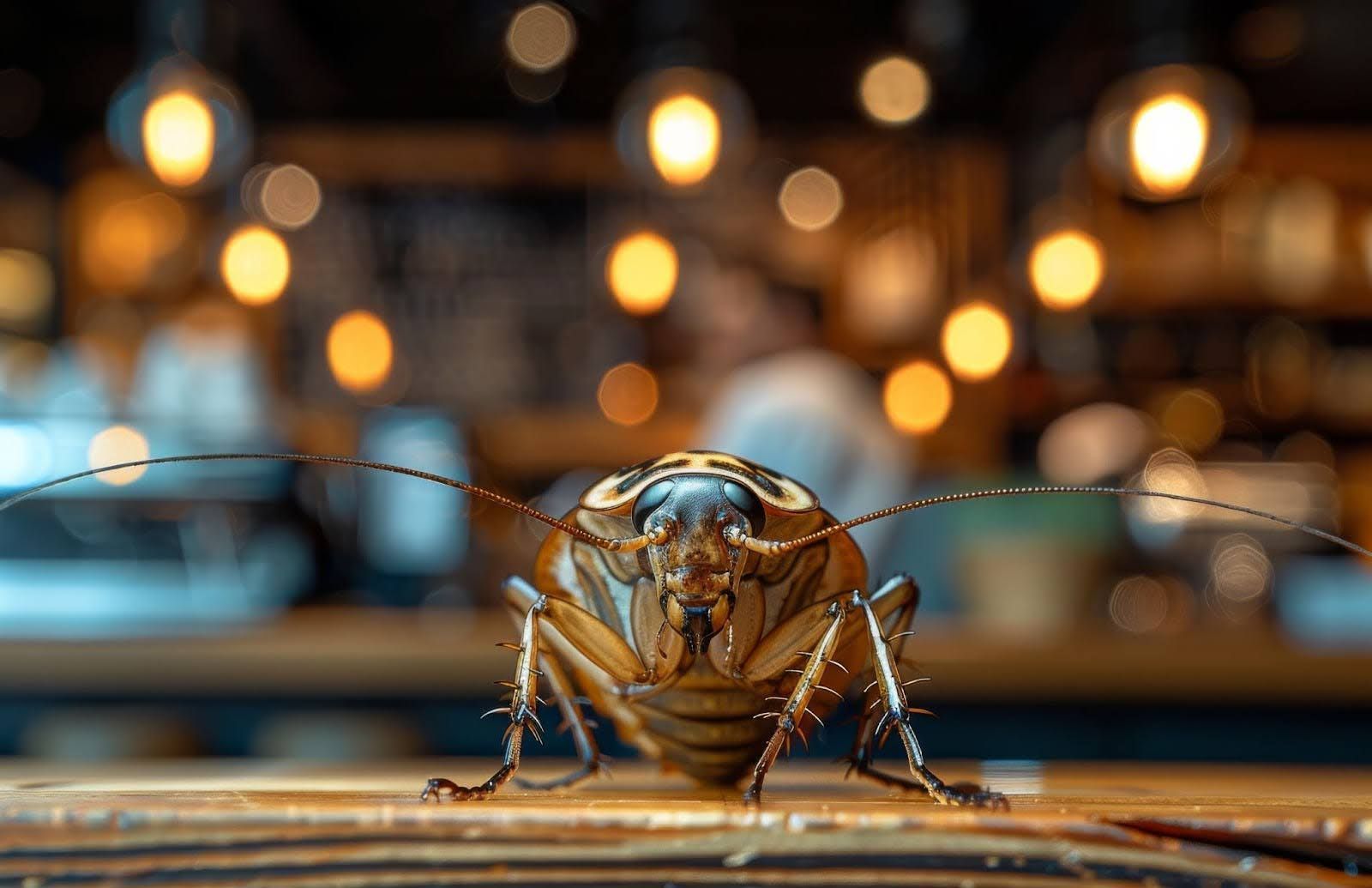
Downtown Meridian, with its charming historic architecture and vibrant local businesses, is a community treasure. These older buildings contribute to the city's unique character, but they also present particular challenges when it comes to pest control. Property owners and managers must address pest issues without compromising the architectural integrity and historical value of these structures. At Natura Pest Control , we understand the delicate balance between preservation and protection. Our eco-friendly pest management strategies are specifically designed to meet the needs of historic properties in downtown Meridian, ensuring both the longevity of these buildings and the health of their occupants. Understanding Pest Challenges in Historic Properties Historic buildings, often constructed with materials and methods no longer in common use, can be especially susceptible to pest infestations. Common issues in older properties include gaps in foundations, aging wooden beams, and outdated plumbing, all of which can create entry points for pests such as rodents, cockroaches, and ants. According to the National Trust for Historic Preservation , maintaining structural integrity while preventing pest damage requires specialized knowledge and a careful, minimally invasive approach. Moisture intrusion is another frequent problem, as older buildings may have less effective waterproofing. Excess moisture can attract a range of pests, including ants and silverfish, and can hasten the deterioration of wood, plaster, and other historic materials. Moreover, many of these properties are situated in bustling urban environments, increasing the risk of pest pressures from adjacent structures. The Importance of Eco-Friendly Pest Control Green pest control methods are essential in historic areas, not only for the wellbeing of building occupants but also to prevent unintended damage to sensitive building materials and the surrounding environment. Traditional chemical treatments can sometimes react with old wood, stone, or plaster, causing discoloration or degradation. Furthermore, eco-friendly solutions align with the growing commitment of Meridian’s community to sustainability and environmental stewardship. Integrated Pest Management (IPM) is the foundation of Natura Pest Control’s approach. IPM emphasizes prevention, monitoring, and targeted treatment, reducing reliance on broad-spectrum pesticides and focusing on long-term results. The U.S. Environmental Protection Agency highlights IPM as a best practice for sensitive environments, including schools, historic sites, and public spaces. Preserving Architectural Integrity During Pest Management When working in historic downtown Meridian, preserving the visual and structural integrity of each property is paramount. Eco-friendly pest control begins with a thorough inspection, identifying vulnerabilities without causing damage. Non-invasive techniques such as thermal imaging cameras and moisture meters allow technicians to detect hidden pest activity behind walls and under floors, minimizing the need for destructive investigation. Physical exclusion methods are particularly effective in historic buildings. Sealing gaps with reversible or minimally invasive materials, repairing mortar with historically appropriate mixes, and installing discreet barriers can prevent pest entry while maintaining the building’s aesthetic. In many cases, we recommend using copper mesh or natural fiber barriers, which deter rodents and insects without introducing synthetic chemicals. Managing Common Pests in Meridian’s Historic Buildings Rodents, cockroaches, ants, and silverfish are frequent unwelcome guests in downtown Meridian’s older structures. Each pest presents unique challenges that require tailored solutions: Rodents : Rats and mice can exploit tiny gaps and chew through aging materials. Eco-friendly rodent management involves sealing entry points, reducing food and water sources, and using humane traps. Our team also advises on landscaping practices that deter rodent activity near foundations. Cockroaches and Ants : These pests thrive where moisture and food are accessible. Non-toxic gel baits and targeted applications of diatomaceous earth are effective in controlling populations. Regular monitoring ensures that any resurgence is caught early, limiting the need for intervention. Silverfish : Drawn to damp, dark spaces, silverfish can damage papers, fabrics, and other organic materials commonly found in historic buildings. Control strategies include improving ventilation, using natural repellents, and ensuring that excess moisture is promptly addressed. A Framework for Green Pest Control in Historic Districts Implementing eco-friendly pest management in historic downtown Meridian involves a multi-step process tailored to each property’s unique needs. Our team collaborates with property owners, building managers, and preservationists to develop a customized plan that prioritizes both pest prevention and architectural stewardship. The process begins with an in-depth assessment, using non-destructive diagnostic tools to identify current infestations and potential risk areas. We then design an Integrated Pest Management plan, focusing on exclusion, habitat modification, and targeted treatment options. Regular follow-ups and education for occupants are crucial components, ensuring that pest pressures are continually managed and the property remains secure. Our team also stays informed on the latest innovations in green pest control, such as biological controls and new low-impact materials, so we can offer Meridian’s historic properties the most advanced and responsible solutions available. For more details on our eco-friendly approach, visit our green pest control services . Supporting Community and Sustainability Efforts Eco-friendly pest control isn’t just about protecting buildings—it’s about safeguarding the health and heritage of downtown Meridian. By choosing green solutions, property owners contribute to a healthier urban ecosystem and demonstrate leadership in sustainability. This commitment aligns with Meridian’s broader goals, such as those outlined by the City of Meridian’s sustainability initiatives , which encourage responsible stewardship of resources and historic assets. At Natura Pest Control, we’re proud to support local businesses, residents, and preservationists in maintaining Meridian’s historic charm for generations to come. If you own or manage a historic property and want to learn more about eco-friendly pest management, contact us today for a consultation and let us help you protect your piece of Meridian’s history in the most sustainable way possible. For more tips on maintaining your historic property and staying pest-free, explore our blog or reach out to our expert team. Together, we can preserve the beauty and legacy of downtown Meridian—naturally.
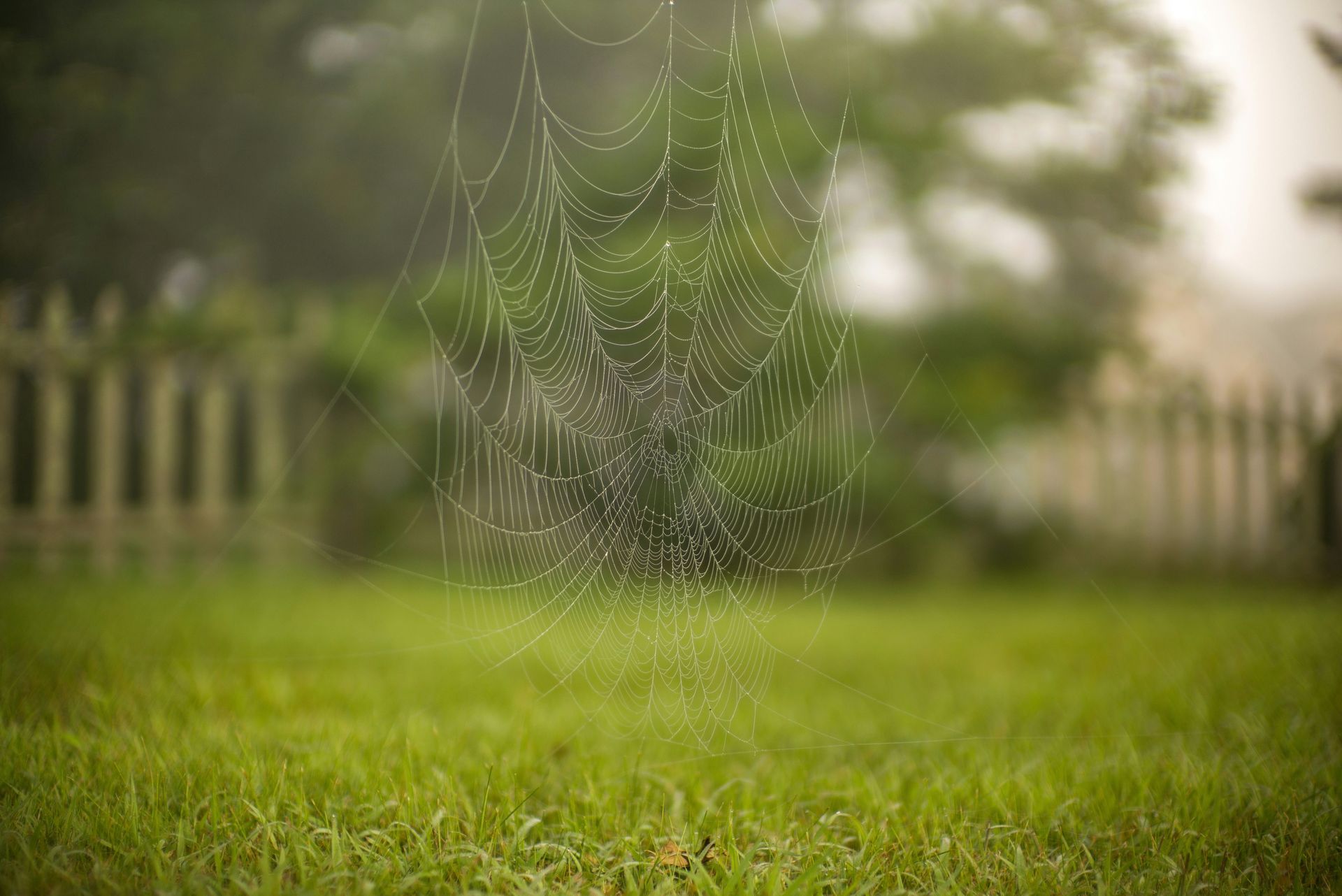
Nevada, with its diverse climate, is home to a variety of spider species. While some are beneficial, aiding in the control of other pests, others can pose health risks. Understanding the difference and learning how to manage these creatures naturally is crucial for Nevada residents. Nevada's Spiders Spiders, though often feared, play a vital role in maintaining ecological balance. They help control populations of other insects, which can be far more harmful to humans and crops. Recognizing which spiders are beneficial and which are potentially dangerous is the first step in spider safety. Beneficial Spiders Most spiders found in Nevada are harmless and play a significant role in pest control. Species like the Wolf Spider and Jumping Spider are common and non-aggressive. They help keep the populations of more problematic insects in check, making them valuable allies in natural pest management. Potentially Harmful Spiders Nevada is home to a few spiders that can be harmful to humans, including the Black Widow and Brown Recluse. These spiders are reclusive by nature and typically bite only when threatened. Understanding their habits and appearances can prevent unnecessary panic. Black Widow: Recognizable by its shiny black body and distinctive red hourglass marking on the abdomen, the black widow's bite can be harmful, causing muscle aches and nausea. However, bites are rarely fatal. Brown Recluse: Identified by their violin-shaped marking on the back, brown recluses are less common in Nevada but can cause significant skin damage if bitten. Strategies for a Spider-Free Home Creating a spider-free home involves a combination of natural methods, beneficial predators, and professional pest control. Natural Prevention Tips Seal Entry Points: Ensure windows, doors, and all potential entry points are sealed. Use weather stripping and caulking to close gaps. This simple step can significantly reduce spider entry. Reduce Clutter: Spiders are drawn to cluttered areas where they can hide. Regularly clean and organize storage spaces to minimize hiding spots. Use Natural Repellents: Essential oils like peppermint and tea tree are known for their spider-repelling properties. These oils can be used in diffusers or diluted sprays around the home to naturally deter spiders. Natural Predators Encouraging natural predators, such as birds and beneficial insects, can help keep spider populations in check. Planting native flowers and maintaining a bird-friendly environment can enhance this natural balance. Professional Pest Control Companies like Natura Pest Control offer environmentally friendly solutions that ensure your home is safe while respecting the ecological role of spiders. Their expertise can help identify specific spider issues and provide targeted treatments that align with ecological concerns. Spiders in Ecology While it might be tempting to eliminate spiders entirely, recognize their ecological role. A balanced approach that respects their place in the ecosystem can prevent unintended consequences, such as an increase in other pest populations. Spiders consume an estimated 400–800 million tons of insects annually, highlighting their importance in pest control. Harmony With Spiders Spider safety in Nevada involves a combination of education, prevention, and respect for these often-misunderstood creatures. By identifying dangerous species and employing natural handling methods, residents can protect themselves while maintaining the ecological balance in their homes and gardens. For more tips on natural pest control, explore our other blog posts on Natura Pest Control. Get in touch with us if you have any questions.
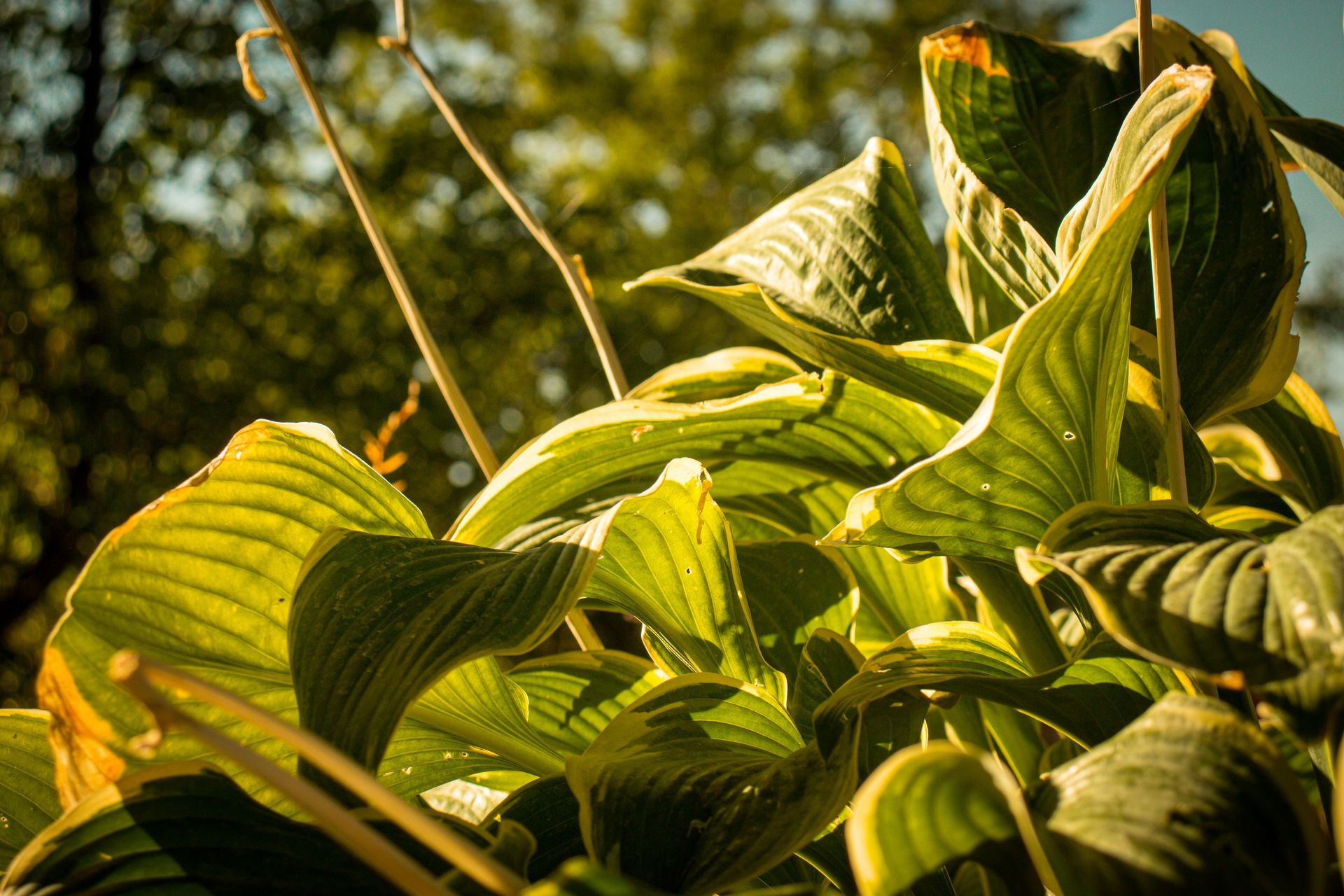
Boise’s high desert environment, coupled with its varied seasons, creates a unique challenge for homeowners seeking to keep pests at bay. The key to fostering a pest-free oasis lies in strategic landscaping that prioritizes native plant species, eco-friendly design, and conscientious care. This approach enriches the local ecosystem while minimizing unwanted critters like insects and rodents by making your yard less appealing to them. Below, explore ways to cultivate a pest-resistant sanctuary in Boise using green solutions. Understanding Boise’s Unique Environment Boise’s climate oscillates between warm, dry summers and cold, snowy winters. This temperature range means that many pests, including insects, attempt to take refuge in cozy corners of outdoor spaces. By harnessing environmental factors to your advantage, you can reduce these pests’ interest in your property. Landscaping choices should reflect this distinctive blend of high desert and river valley environments. Selecting vegetation that naturally thrives here can curb reliance on artificial pesticides and discourage pest infestations. Harnessing the Power of Native Plants One of the most effective ways to repel pests without harsh chemicals is to plant species already adapted to the Boise area. Native plants tend to be hardier, requiring less water and fewer chemical treatments overall. Many also produce natural deterrents that discourage harmful insects. For instance, yarrow releases aromatic compounds disliked by certain insects. Penstemon is known for attracting beneficial pollinators like bees and hummingbirds, helping maintain ecological balance. Not only do these plants deter pests, but they also support Boise’s native pollinators. This symbiotic relationship strengthens your garden’s natural resilience while reducing uninvited critters. By interspersing these plants throughout your yard, you encourage biodiversity—a cornerstone of any pest-resistant strategy. Using Companion Planting for Natural Pest Control In addition to relying on native plants, incorporating companion planting can further boost your garden’s immune system against pests. Different plant species work together to deter insects and diseases, often by masking the scent or appearance of valuable crops. While many local gardens focus on vegetables, the same principles apply to ornamental perennials, shrubs, and even container gardens. For example, you can grow basil near tomatoes or peppers—basil’s strong scent confuses pests attempting to locate your veggies. Companion planting can reduce pest severity significantly. These stats highlight how synergy among plants plays a crucial role in sustainable pest management. Designing a Pest-Repellent Landscape While choosing the right plants is essential, a successful pest-repellent landscape also depends on the way you organize your yard. Strategic Plant Placement Cluster pest-deterring species near doorways and windows to create a natural barrier. Place them around the perimeter of your property to limit pest entry from neighboring yards or open spaces. Adequate Spacing Overcrowded vegetation traps moisture, which can attract insects and rodents seeking water or damp shelter. Leave enough room between plants to promote airflow, reduce fungal risk, and prevent pests from hiding in dense foliage. Mulch and Ground Covers Biodegradable mulch and ground covers like clover help maintain steady soil moisture and temperature, reducing stress on plants. Healthy plants are naturally more resistant to infestations, so investing in proper mulching helps both soil quality and pest moderation. Watering Schedules Rather than frequent, shallow watering, aim for thorough, spaced-out irrigation. This practice encourages strong root systems without creating constantly moist soil that appeals to pests such as pill bugs and earwigs. Sustaining a Pest-Free Yard A pest-repelling landscape isn’t just about design; consistent upkeep is crucial to making it last. Regular Pruning: Trim overgrown branches and remove dead leaves or stems. Pests are less likely to inhabit well-trimmed shrubs and trees. Leaf Debris Management: Clearing fallen leaves from lawns and garden beds prevents damp, decaying layers that attract insects. A monthly sweep-through keeps your space fresh. Natural Nutrients: Fertilizing with compost or well-aged manure boosts soil health and reduces chemical reliance. Gardens regularly amended with compost demonstrated fewer pest issues. These fundamental practices often yield long-term benefits. By nurturing a balanced ecosystem, you limit opportunities for pests to take hold. Discovering Green Solutions for Proactive Pest Deterrence Sustainability lies at the heart of any green landscaping strategy. Boise residents can take advantage of other eco-friendly measures. Attracting Beneficial Insects Natural pest predators—like ladybugs, lacewings, and praying mantises—can be your greatest allies. Installing insect houses or providing water sources encourages these helpful bugs to settle in. Gardens that successfully attract beneficial insects often experience a reduction in pest outbreaks. Using Organic or Natural Barriers Adding row covers or netting around vulnerable plants can physically block pests without the need for chemical sprays. While this method is common in vegetable gardens, you can also adapt it to protect ornamental flowers or newly planted shrubs. Embracing Eco-Friendly Mulches Various mulch materials—from straw and wood chips to pine needles—offer a natural layer of protection. They reduce weed competition, stabilize soil temperature, and block some pests’ burrowing routes. Ensuring mulch is pest-free and properly aged is key, however, since untested organic matter can inadvertently introduce unwanted species. Searching Out Local Resources and Support Boise’s tight-knit community values sustainability and responsible land management. Resources like the Idaho Botanical Garden provide in-person workshops. Take full advantage of such local knowledge, as well as the guidance offered by Natura Pest Control , when tailoring your landscape to Idaho’s environment. By creating a healthy habitat for natural predators, carefully selecting native plants, and employing smart gardening practices, you effectively keep pests from making your yard their home. In turn, you’ll see more vibrant plants, safe outdoor living spaces, and a reduced dependence on conventional pest control methods. Going Beyond a Pest-Free Routine Remember that a robust yard does more than ward off insects and rodents. It fosters a harmonious environment where local wildlife thrives. Consider investing in pollinator-friendly flowers and shrubs, as well as offering easily accessible water sources for birds. A well-rounded approach to outdoor space management supports the homeowner’s comfort and contributes to the overall health of the community. In Boise, where nature’s beauty is a key element of everyday life, adopting these green, pest-repelling tactics can both protect your property and preserve the city’s beloved environment. With proper planning, consistent maintenance, and a commitment to sustainability, you’ll be well on your way to enjoying a naturally fortified landscape that flourishes in Idaho’s dynamic climate. For additional guidance and professional assistance, consult with the local experts at Natura Pest Control who understand the intricacies of pest management in the Treasure Valley region.
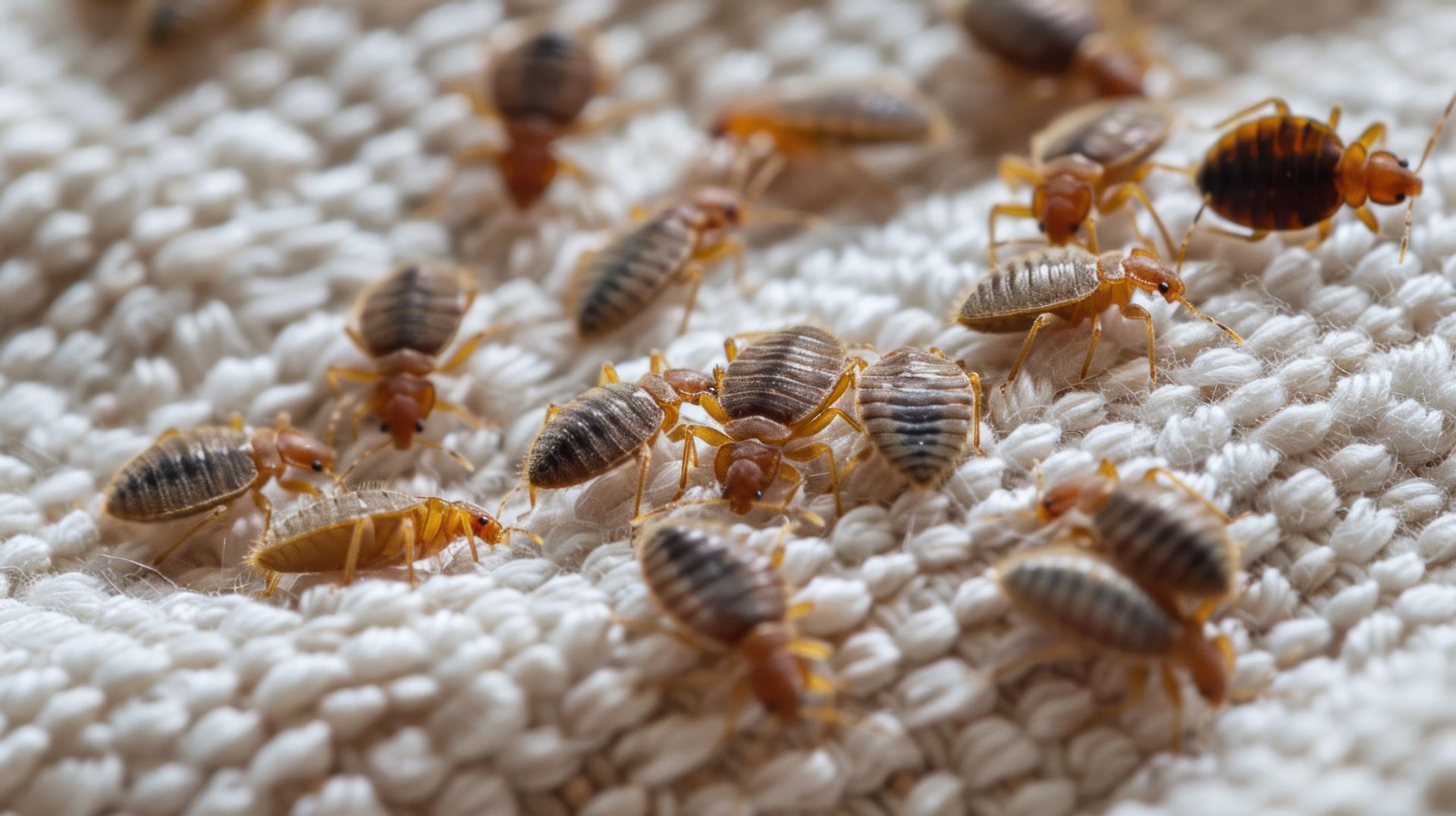
Bed bugs are notorious for their stealthy habits and rapid spread, making them a persistent threat to homes and businesses across Nevada. While these tiny pests are often associated with beds and hotels, they can be found virtually anywhere people gather and rest. Understanding bed bug behaviors, especially those unique to Nevada’s climate and living conditions, is crucial for effective prevention and control. Here, we’ll explore how infestations occur, the most common warning signs, eco-friendly prevention strategies, and the vital role of regular inspections in long-term property maintenance. Bed Bug Behaviors in Nevada Nevada’s arid climate presents unique challenges and opportunities for bed bugs. Unlike more humid environments, Nevada’s dry conditions may slow their development somewhat, but these pests remain remarkably resilient. Bed bugs thrive in temperature-controlled environments, making homes, hotels, and apartments in cities like Las Vegas, Reno, and Henderson prime targets. Research has shown that bed bugs can survive for several months without feeding, making them difficult to eliminate once established. Their preference for warmth means they often congregate in mattresses, box springs, furniture, and cracks or crevices near sleeping areas. Bed bugs are skilled hitchhikers, easily traveling in luggage, clothing, and used furniture—a common issue for the many tourists and residents moving in and out of Nevada each year. How Bed Bug Infestations Occur Bed bug infestations typically begin when these pests are inadvertently brought into a home or business. The risk increases with travel, secondhand furniture purchases, and high turnover in multi-family dwellings. Bed bugs are not a sign of poor hygiene or cleanliness; even the most pristine properties can be affected. They are primarily attracted by the carbon dioxide and warmth produced by humans, rather than dirt or food. Once inside, bed bugs hide in small, dark spaces during the day and emerge at night to feed. A single female bed bug can lay hundreds of eggs in her lifetime, leading to a rapid escalation if not addressed promptly. Because infestations often begin discreetly, it’s important to recognize the early warning signs to prevent widespread outbreaks. Common Signs of a Bed Bug Infestation Detecting bed bugs early is the best way to minimize their impact. The most obvious sign is waking up with itchy, red bites, typically arranged in a line or cluster on exposed skin. However, not everyone reacts to bites, making visual inspections crucial. Other common indicators include: Small blood stains on sheets or pillowcases, caused by crushed bugs after feeding. Dark or rusty spots of bed bug excrement on mattresses, bedding, or walls. Tiny, pale eggs or eggshells, often found in mattress seams, bed frames, or furniture joints. Live bed bugs , which are small (about the size of an apple seed), flat, and reddish-brown in color. If you notice any of these signs, it’s important to act quickly. Bed bugs multiply fast, and what starts as a minor issue can become a major infestation in just a few weeks. Eco-Friendly Strategies for Prevention and Control At Natura Pest Control, we prioritize eco-friendly and effective solutions that safeguard your property without compromising your health or the environment. Preventing bed bug infestations begins with vigilance and informed habits. Regularly inspect your sleeping areas, especially after travel or when bringing secondhand items into your home. Using mattress and box spring encasements can create an effective barrier, making it harder for bed bugs to hide or spread. Vacuuming regularly, especially around bed frames and baseboards, can help remove stray bugs or eggs before they become a problem. When traveling, always inspect hotel rooms before unpacking. Check the mattress seams, headboards, and nearby furniture for any signs of activity. Keep luggage elevated and away from beds or upholstered furniture, and consider washing and drying clothes on high heat immediately after returning home. Professional eco-friendly treatments, such as those offered by Natura Pest Control , utilize targeted methods that minimize impact on beneficial insects and the surrounding environment. These treatments focus on eliminating bed bugs at every stage of their lifecycle, providing long-lasting protection without excessive use of conventional chemicals. The Importance of Regular Inspections Routine inspections are a cornerstone of successful bed bug prevention. Regular assessments, conducted by trained professionals, can catch infestations in their earliest stages—before they spread to multiple rooms or units. In multi-family properties, hotels, and other high-risk environments, scheduled inspections are especially valuable. Research from the National Pest Management Association found that early detection is key to effective control, as infestations caught within the first few weeks are far easier to manage. By partnering with a local pest control expert, you can ensure that even subtle signs are identified and addressed promptly. Natura Pest Control offers comprehensive inspection services designed for Nevada properties, providing peace of mind and an actionable plan for ongoing protection. To learn more about our approach and schedule a visit, visit our bed bug solutions page . Long-Term Property Maintenance and Peace of Mind Bed bug prevention is an ongoing process, not a one-time fix. Consistent cleaning, monitoring, and professional support are essential for long-term property health. Protecting your home or business against bed bugs not only ensures the comfort and safety of your family, guests, or tenants—it also preserves the value of your investment. Staying informed and proactive is your best defense. With Nevada’s unique climate and population dynamics, taking steps now to understand and prevent bed bug infestations can save time, stress, and resources in the future. If you suspect a bed bug issue or want to enhance your prevention measures, trust the experts at Natura Pest Control. Our team is dedicated to providing safe, effective, and eco-friendly solutions tailored to Nevada’s needs. For more information and helpful resources, explore our blog or contact us today.

In the fast-growing commercial landscapes of Sparks and Meridian, property owners face the ongoing challenge of keeping their environments pest-free while maintaining a commitment to sustainability. Traditional pest control methods, though effective, often raise concerns about indoor air quality, environmental impact, and the well-being of employees and clients. As a result, more businesses are turning to green pest control solutions, which offer a host of long-term benefits beyond immediate pest elimination. Why Green Pest Control Matters for Commercial Properties Maintaining a clean, safe, and healthy environment is paramount for any commercial space. Green pest control is more than just a trend—it’s a strategic investment in your property’s future. Unlike conventional methods that rely on harsh chemicals, green pest control utilizes environmentally conscious techniques and products that target pests while minimizing risks to people, pets, and the planet. This approach aligns with growing consumer expectations for corporate responsibility and healthier workspaces. Natura Pest Control specializes in innovative, eco-friendly solutions tailored to the unique needs of commercial clients in Sparks and Meridian. By choosing green pest control, businesses can protect their properties, support sustainability goals, and foster a positive image in their communities. Cost Savings Through Long-Term Sustainability One of the most significant advantages of adopting green pest control is the long-term cost savings it offers. While traditional methods might provide a quick fix, they often require frequent reapplications and can lead to pest resistance over time. Green solutions focus on integrated pest management (IPM) strategies, which emphasize prevention, monitoring, and targeted treatment. A study from the U.S. Environmental Protection Agency found that IPM programs can reduce overall pest management costs by up to 30% compared to conventional methods. By addressing the root causes of infestations—such as structural vulnerabilities and sanitation issues—green pest control reduces the likelihood of recurring problems, saving businesses money on emergency treatments and property repairs. Moreover, many eco-friendly products and methods have a lower impact on building materials and furnishings, helping to preserve the value of your property over time. With fewer disruptions and less downtime associated with chemical treatments, businesses can maintain productivity and avoid costly interruptions to daily operations. Improved Indoor Air Quality and Healthier Workspaces The quality of indoor air in commercial properties directly affects employee well-being, customer satisfaction, and overall productivity. Conventional pest control methods often involve the use of volatile organic compounds (VOCs) and other chemicals that can linger in the air, potentially triggering allergies, respiratory issues, and other health concerns. Green pest control solutions prioritize the use of low-toxicity, biodegradable products that break down safely in the environment. According to the Centers for Disease Control and Prevention , improved indoor air quality can lead to significant reductions in absenteeism and health-related costs in commercial settings. By opting for eco-friendly pest management, businesses demonstrate a commitment to creating a healthier, more comfortable environment for everyone who enters their building. At Natura Pest Control, our team employs proven green technologies and safe application techniques to ensure minimal impact on indoor air quality. This approach is particularly important for sensitive environments such as healthcare facilities, schools, and food service establishments, where the health of occupants is paramount. Enhancing Your Company Reputation with Eco-Friendly Choices Sustainability is increasingly becoming a key factor in business decision-making and brand perception. Companies that prioritize green initiatives are more likely to attract environmentally conscious customers, tenants, and partners. In fact, a recent Nielsen study found that 81% of global consumers feel strongly that companies should help improve the environment. By choosing green pest control, commercial property owners can publicly demonstrate their commitment to sustainability, setting themselves apart from competitors and appealing to a wider audience. Eco-friendly pest management can also be highlighted in marketing materials, sustainability reports, and corporate social responsibility initiatives, further strengthening your brand’s reputation. Natura Pest Control has worked with a diverse range of commercial clients to implement green pest control strategies. For example, many businesses in the Pacific Northwest have seen measurable improvements in employee satisfaction and customer feedback after adopting environmentally friendly pest management approaches. This trend mirrors broader findings in the commercial property sector , where green building certifications and eco-friendly practices help attract tenants and investors who value sustainable operations. Real-World Results: Green Pest Control in Practice Research and industry reports consistently demonstrate the effectiveness of green pest control in commercial settings. For instance, a study by the University of California Statewide Integrated Pest Management Program found that integrated pest management significantly reduces pest complaints and pesticide use in commercial properties, while maintaining high standards of safety and effectiveness. These results are echoed by businesses that have adopted IPM-based pest control, who often report fewer pest-related disruptions and a more positive workplace environment. Natura Pest Control’s commitment to green solutions is reflected in our customer reviews and long-standing relationships with local businesses. Our team stays up-to-date with the latest industry advancements, ensuring that Sparks and Meridian property managers receive pest control solutions that are both effective and environmentally responsible. Partnering with Natura Pest Control for Lasting Results Choosing the right pest control provider is critical to achieving sustainable, effective results. At Natura Pest Control, we pride ourselves on our expertise in green pest management for commercial properties in Sparks, Meridian, and beyond. Our customized solutions prioritize safety, effectiveness, and long-term prevention, helping your business thrive while supporting a healthier, greener community. If you’re ready to experience the long-term benefits of green pest control, contact Natura Pest Control today to schedule a consultation. Discover how our eco-friendly approach can protect your property, enhance your reputation, and support your sustainability goals for years to come. Explore more about our commercial pest control services or read our latest insights on green solutions for businesses on the Natura Pest Control blog .
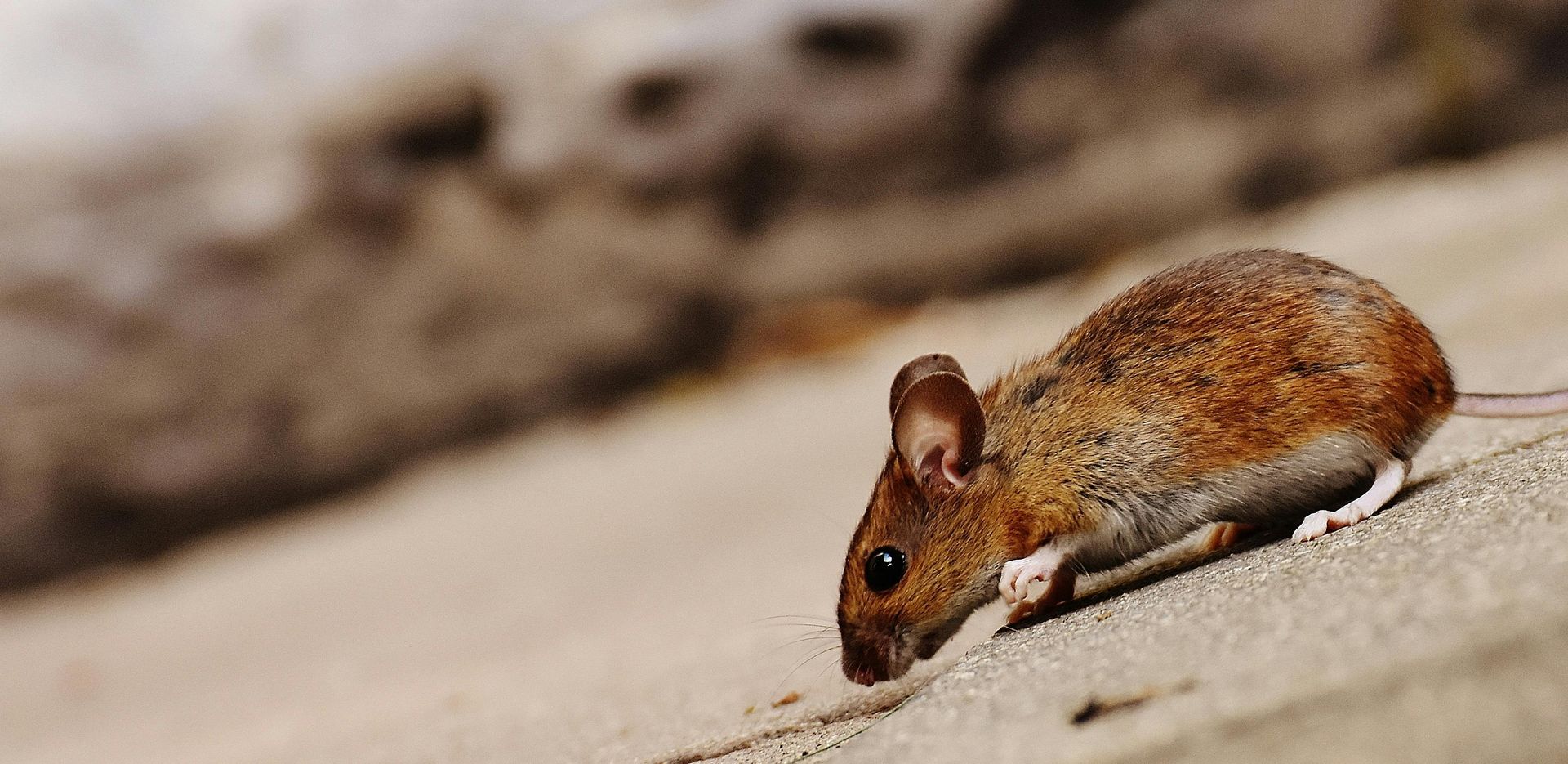
Every region has its fair share of pests, but Idaho’s unique climate and seasons create notable challenges for homeowners year-round. When temperatures shift—whether it’s the arrival of the frigid winter or the warmth of spring—various insects and rodents begin to migrate in search of food, shelter, and more favorable living conditions. Knowing the patterns behind this seasonal pest movement can help you stay one step ahead of infestations, protecting both your property and your family’s well-being. Understanding Seasonal Pest Migration Many pests are sensitive to changes in temperature and humidity. This sensitivity compels them to either seek warmer environments in cold weather or cooler spaces in the hotter months. In Idaho, with its cold winters and relatively dry summers, seasonal transitions can be stark, causing noticeable pest activity surges. For instance, when winter temperatures drop, rodents like mice and rats often move indoors, drawn to the comfort of heated homes and readily available food sources. Similarly, ants seek refuge from freezing outdoor conditions and may tunnel their way into basements or crawl spaces. Even in transitional months like autumn, pests begin seeking warm hiding spots in anticipation of winter. As temperatures rise in spring and early summer, pests might adjust their nesting and foraging patterns again. Warmer weather often triggers breeding cycles, resulting in a surge of insect populations such as wasps, ants, and certain types of beetles. Common Idaho Pests and Their Patterns Idaho is home to a variety of pests, yet some tend to be more active during seasonal changes than others: Rodents (mice and rats): These critters usually move indoors in late fall and winter. They can contaminate food, damage wiring, and gnaw through insulation, leaving behind droppings and bacteria. Ants (Argentine ants, odorous house ants): Ants typically invade kitchens and bathrooms in search of moisture and sweet or greasy foods. Seasonal rains or droughts can drive them indoors as they look for better living conditions. Spiders (house spiders, hobo spiders): Though many spiders are beneficial because they eat other insects, they often move indoors when outside temperatures drop, or in some cases, when outdoor prey sources dwindle. Boxelder bugs: These insects, known for their black and orange-red markings, gather on warm surfaces and can invade homes in large numbers during the cooler months, often looking for a warm spot to overwinter. Wasps and hornets: Wasp and hornet activity typically rises in the spring and summer. They build nests close to human dwellings if they find sheltered eaves or cavities. These patterns—rooted in survival needs—call for increased vigilance and preparedness throughout the year. It makes sense to do more than just “watch out” for pests; rather, homeowners can plan for potential pest risks proactively. The Importance of Seasonal Pest Management Seasonal pest management is not simply a matter of comfort—though that counts, too. Infestations can lead to problems like property damage and health concerns: Property damage: Rodents can chew on wires, potentially causing electrical hazards. Termites—though less active in extremely cold winters—can still wreak havoc on wood structures when temperatures are moderate. Health concerns: Some pests carry diseases or trigger allergies. Rodent droppings can lead to illnesses like hantavirus. Cockroach allergens can worsen asthma symptoms, especially in children. Agriculture impact: Idaho’s agricultural community is significant; pests in your yard can spread or exacerbate insect pressure on nearby farms or orchards. Costs of neglect: Delaying pest control measures can allow infestations to grow, resulting in more complex and more expensive treatments later on. By anticipating pests’ seasonal shifts, you minimize disruptions, guard your property, and help maintain a healthier indoor environment for your family. Staying ahead of seasonal changes in pest prevalence greatly reduces risk, further emphasizing the importance of timely professional intervention. Practical Steps for Idaho Homeowners While synthetic chemicals and strong pesticides are well-known methods, there are plenty of non-chemical or minimally invasive practices that help minimize pest migration into your home. Here are some ways to prepare: Seal Entry Points: Inspect common entry points around your home’s foundation, windows, doors, and utility lines. Even the smallest cracks allow rodents and insects to get inside. Consider using weatherproof sealants to fill in gaps. Control Moisture: Pests seek water sources as much as they do food. Repair any leaking pipes or clogged gutters to reduce damp conditions. Make sure basements and crawl spaces are well-ventilated. Store Food Properly: Rodents, ants, and pantry moths thrive when exposed to easy food sources. Opt for airtight containers made of glass or sturdy plastic. Keeping your trash bins sealed also reduces the likelihood of attracting pests. Maintain Yard Health: Overgrown shrubs, wood piles, and fallen leaves can hide pests close to your foundation. Keep trees and bushes trimmed away from the house, store firewood off the ground, and routinely clear debris. Observe Seasonal Shifts: As fall approaches, look for droppings and gnaw marks from rodents. In spring, watch for wasp nests starting to form under eaves. Staying alert to early signs of infestation can help you respond promptly. By prioritizing these simple tactics, homeowners can deter many pests before they become a noticeable problem. Paying close attention to seasonal cues and identifying risks will save both time and money in the long run. Partnering with a Professional Pest Control Service Even with thorough preventative measures, pest challenges can still arise. Because seasonal pest pressures fluctuate dramatically in Idaho, having a professional pest control service evaluate your home and offer guidance can be a game-changer. Experienced technicians can identify breeding sites, spot hidden vulnerabilities, and recommend targeted treatments that minimize the need for harsh chemicals. At Natura Pest Control , we offer environmentally responsible solutions that tackle pests without overreliance on chemicals. The goal is to keep your home safe and pest-free, honoring Idaho’s natural beauty and safeguarding your peace of mind. Integrated Pest Management (IPM)—involving sealing entry points, proper sanitation, and limited chemical use—is highly effective in mitigating rodent-borne diseases and other pest issues. Stay Prepared and Secure Long-Term Peace of Mind Keeping abreast of seasonal pest migration is an ongoing process. Regular maintenance, inspections, and adjustments to your home environment are part of life in Idaho’s varied climate. But when you incorporate preventative strategies and partner with a reputable pest control service, pests become far more manageable. The result is a healthier home, a safer community, and peace of mind throughout every season. Whether your home is currently pest-free or you’ve noticed signs of unwanted visitors, taking action sooner rather than later is always wise. This approach helps you catch potential infestations early, addresses issues at their source, and upholds the comfort and security of your living space. If you’d like more information on our eco-friendly pest control services or simply want professional advice tailored to your specific property, contact us today to speak with an expert. You can also explore our range of residential services at your convenience. Let’s work together to ensure your home stays protected year-round, no matter how the seasons change in Idaho.

